Invented by Leon Stenneth, Here Global BV
Vehicle classification based on automation level is typically divided into six categories, ranging from no automation (Level 0) to full automation (Level 5). Level 0 vehicles have no automation features and require the driver to control all aspects of the vehicle. Level 5 vehicles, on the other hand, are fully autonomous and require no human intervention.
As the number of vehicles with automation features increases, the need for accurate classification becomes more important. This is where methods and apparatus for vehicle classification come into play. These technologies use a variety of sensors and algorithms to determine a vehicle’s level of automation.
One of the most common methods for vehicle classification is based on the Society of Automotive Engineers (SAE) automation levels. This system categorizes vehicles based on their level of automation, with Level 0 being no automation and Level 5 being full automation. Other methods for vehicle classification include using cameras, lidar, and radar sensors to detect a vehicle’s automation level.
The market for methods and apparatus for vehicle classification is expected to grow significantly in the coming years. According to a report by MarketsandMarkets, the market for autonomous vehicle technology is expected to reach $60.94 billion by 2030. This growth is being driven by a number of factors, including increasing demand for safety features, advancements in technology, and government regulations.
One of the key players in the market for vehicle classification technology is Mobileye, a subsidiary of Intel. Mobileye’s advanced driver-assistance systems (ADAS) use a combination of cameras and sensors to detect and classify vehicles based on their level of automation. Other companies in the market include Aptiv, Bosch, and Continental.
In conclusion, the market for methods and apparatus for vehicle classification based upon automation level is growing rapidly as the automotive industry continues to evolve. Accurate classification is essential for safety, regulatory compliance, and insurance purposes. With the rise of autonomous vehicles, the demand for these technologies is expected to increase significantly in the coming years. Companies like Mobileye, Aptiv, Bosch, and Continental are at the forefront of this market, developing innovative solutions to meet the needs of the automotive industry.
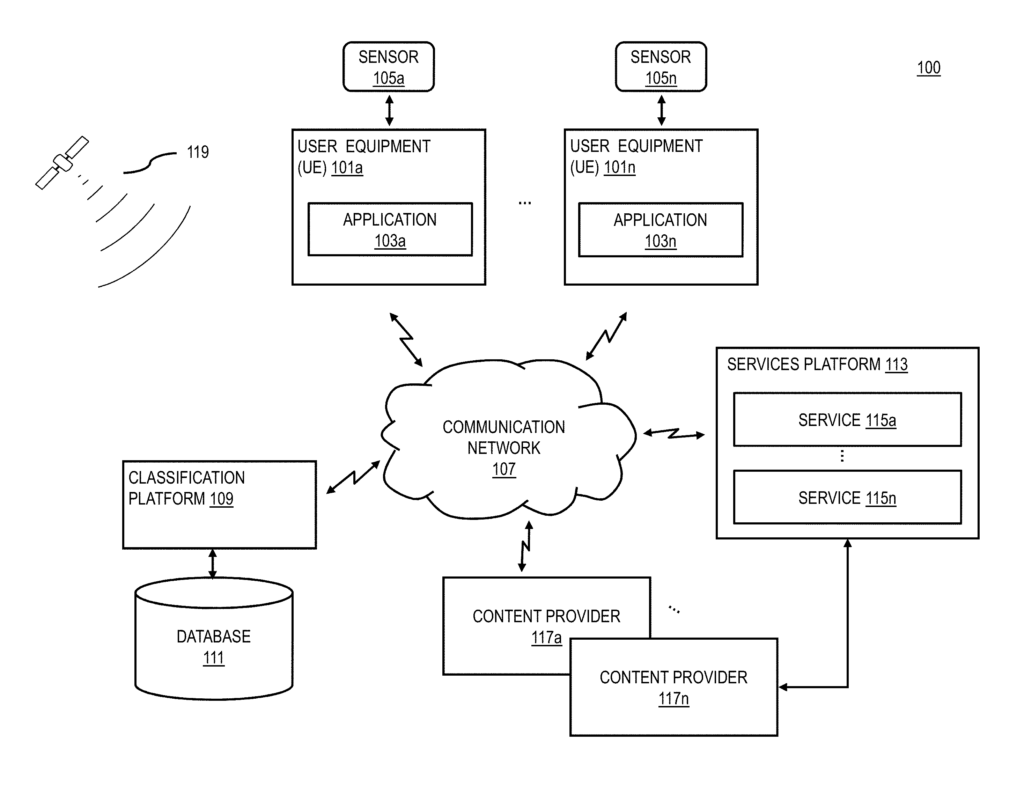
The Here Global BV invention works as follows
A method is proposed for classifying one or several vehicles based upon their level of automation. This approach uses training sensor data from at least one vehicle driving operation to determine the level of automation. This approach involves the determination of one or several sensor signatures for one or multiple automation levels, at least in part based on one or two values of one or many classification features extracted from training sensor data. This approach also involves the classification of at least one vehicle according to one or several automation levels. It is based at least partially on one or two sensor signatures and the sensor data associated with that vehicle.
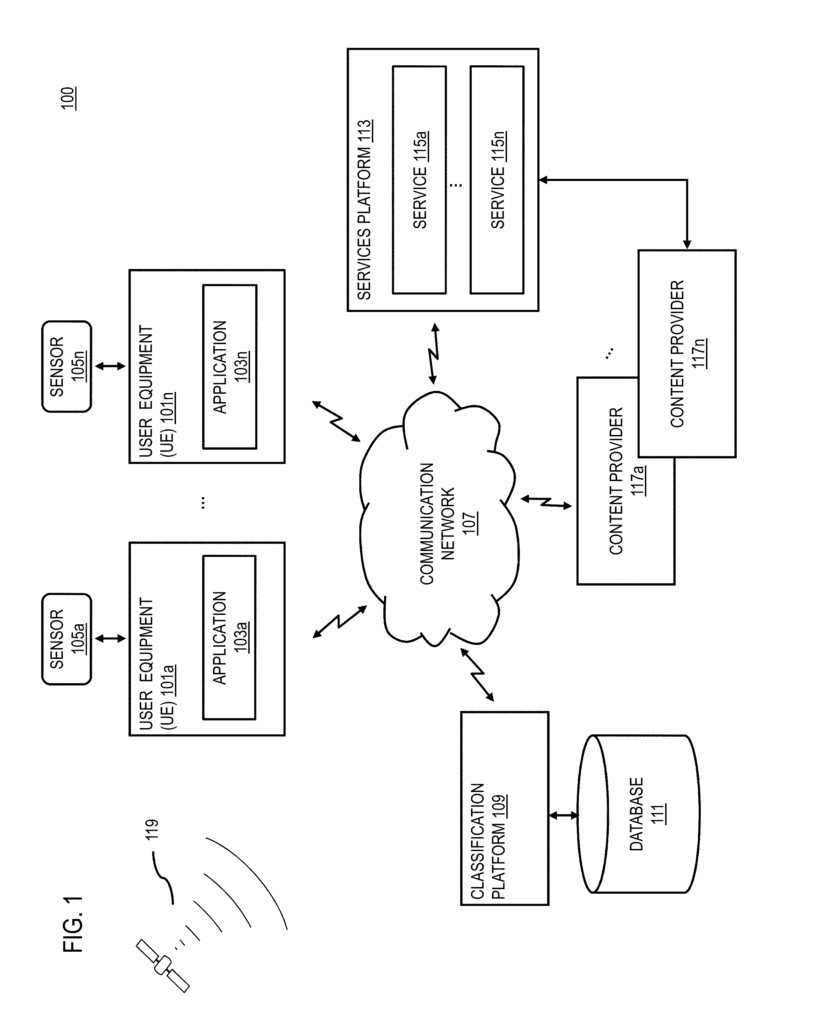
Background for Methods and apparatus for vehicle classification based upon automation level
Service providers get sensor data from various types of vehicles. These sensor data are essential for traffic safety analysis and resource allocation. Sensor data can have varying levels of relevancy, reliability, accuracy. Service providers face constant challenges to provide value and convenience to customers by offering automated vehicle classification. This will enable them to offer more personalized services to both travelers and vehicles.
SOME EXAMPLE EMBODIMENTS.
There is therefore a need to develop a method for classifying vehicles based on the level of automation.
Accordingly to one embodiment, a method includes determining the training sensor data collected during at minimum one driving operation of one, or more, wherein one, or more automation levels of that one, or more vehicles is known. The method includes determining one of the sensor signatures for one or several automation levels, at least in part based on one or multiple values of one or two classification features extracted form the training sensor data. The method also includes causing, at minimum in part, a classification for one or several other vehicles according the one (or more) automation levels based at least in some part on one or multiple sensor signatures or sensor data associated with one or both of the other vehicles.
According another embodiment, an apparatus includes at least 1 processor and at most one memory, including computer program codes for one or multiple computer programs. The at least 1 memory and the computer code are configured to cause the apparatus to determine the training sensor data collected during at minimum one driving operation of one of more vehicles. In this case, one or several automation levels of the vehicle are known. The apparatus can also be used to determine one of the sensor signatures that correspond to the one or several automation levels. These sensor signatures are determined, at minimum in part, based on one or two values of one or multiple classification features extracted from training sensor data. Further, the apparatus causes, at minimum in part, the classification of one or several other vehicles according the one (or more) automation levels based at least in some part on one or multiple sensor signatures or sensor data associated with one or both vehicles.
According another embodiment, a computer readable storage medium contains one or several sequences of one, or more instructions that, when executed, cause, at minimum in part, an apparatus for determining training sensor data collected during at most one driving operation of one, or more vehicles. In this case, one or multiple automation levels of the vehicle are known. The apparatus can also be used to determine one of the sensor signatures that correspond to the one or two automation levels. These are determined, at minimum in part, using one or several values of the classification features extracted from training sensor data. Further, the apparatus causes, at minimum in part, the classification of one or several other vehicles according the one (or more) automation levels based at least in some part on one or multiple sensor signatures or sensor data associated with one or both vehicles.
An apparatus is described in another embodiment. It includes means to determine training sensor data that was collected during at least one driving operation on one or more vehicles. In this case, one or more automation levels are known. The apparatus includes means to determine one or several sensor signatures for each of the automation levels. These signatures are determined, at minimum in part, using one or two values of one or multiple classification features extracted from training sensor data. Further, the apparatus includes means to cause, at minimum in part, the classification of one or several other vehicles according the one, or more, automation levels. This is done based at least in part on the one, or more sensor signatures or sensor data associated with one or both vehicles.
In addition, there are various examples of embodiments of the invention: A method that facilitates the processing of (1) data and/or(2) information and/or(3) at least one signals, the (1) data, (2) information, and/or(3) at least one signal based at least in partial on (or derived at most in part from) any of the methods (or processes), disclosed in this patent as applicable to any embodiments of invention.
For different embodiments of the invention, this is also applicable: A method that facilitates access to at minimum one interface to allow access to service, the service configured to perform any combination of network provider methods (or processes), disclosed in this application.
For different embodiments of invention, the following is applicable: A method that facilitates creating and/or facilitating modifying (1) at most one device interface element and/or(2) at least two device interface functionality. The (1) at minimum one device interface element and/or the (2) at the least one user interface functionality are based, at the least in part on data and/or Information resulting from any one or more of the methods or processes described in this patent as relevant for any embodiment of this invention and/or at the least one signal resulting in any combination of these methods
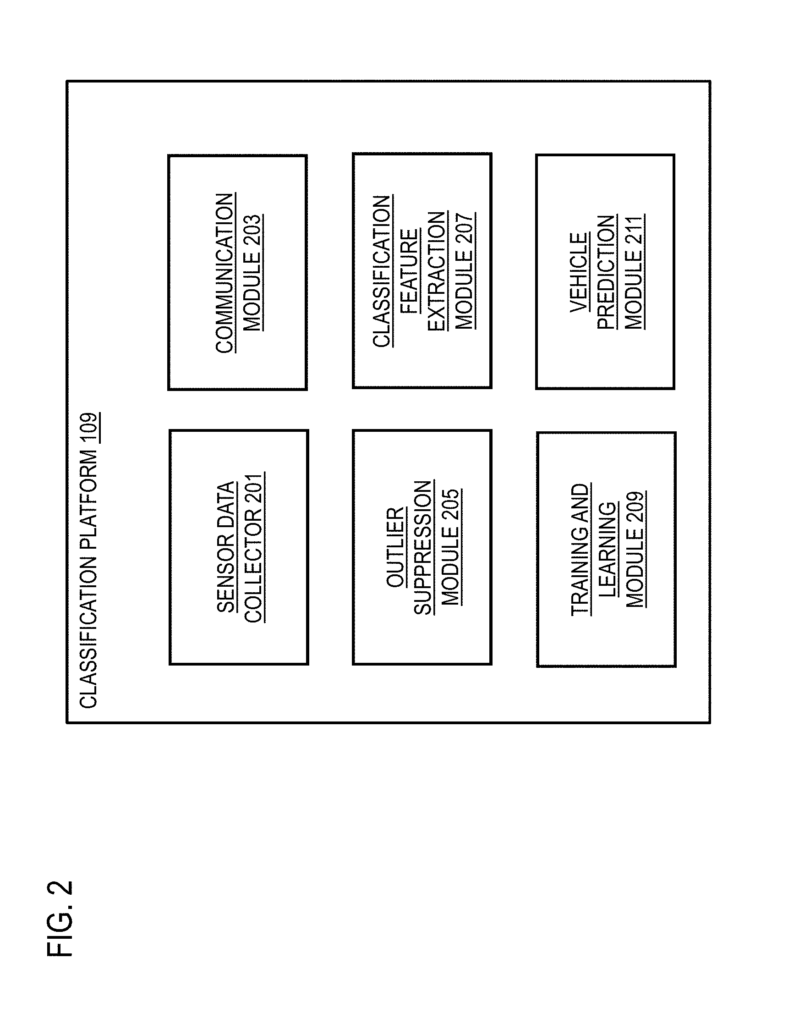
For different embodiments of invention, the following is applicable: A method that creates and/or modifies (1) at most one device interface element and/or(2) at least two device interface functionality. The (1) at minimum one device interface element and/or(2) at least two device interface functionality are based at the least in part on data or information resulting in one or more of the methods (or combinations thereof) described in this patent as relevant for any embodiment.
In different examples, the methods or processes can be done on the service provider side or the mobile device side or in any other shared way between the service provider and the mobile device with actions being taken on both sides.
For different example embodiments, please refer to the following: An apparatus comprising means to perform the method of any originally filed claims.
The following detailed description will reveal other features and benefits of the invention. It simply illustrates a variety of implementations and embodiments of the invention, as well as the best way to carry out the invention. It is possible to modify the details in many obvious ways without affecting the spirit or scope of the invention. Drawings and descriptions are meant to be considered illustrative and not restrictive.
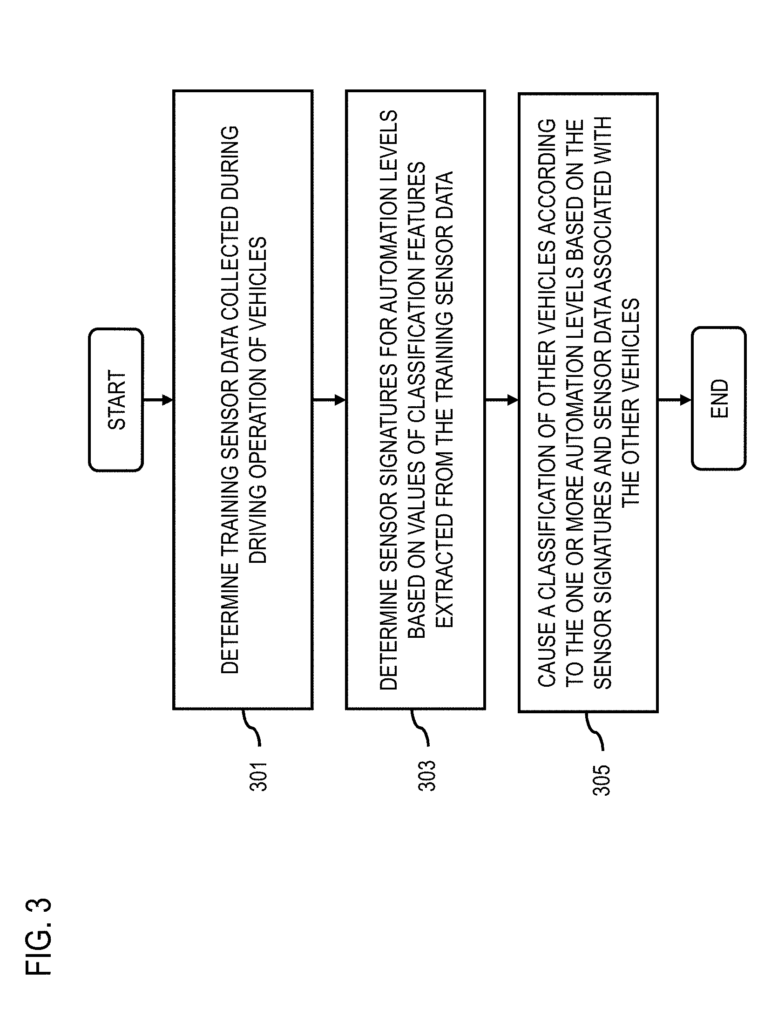
Click here to view the patent on Google Patents.
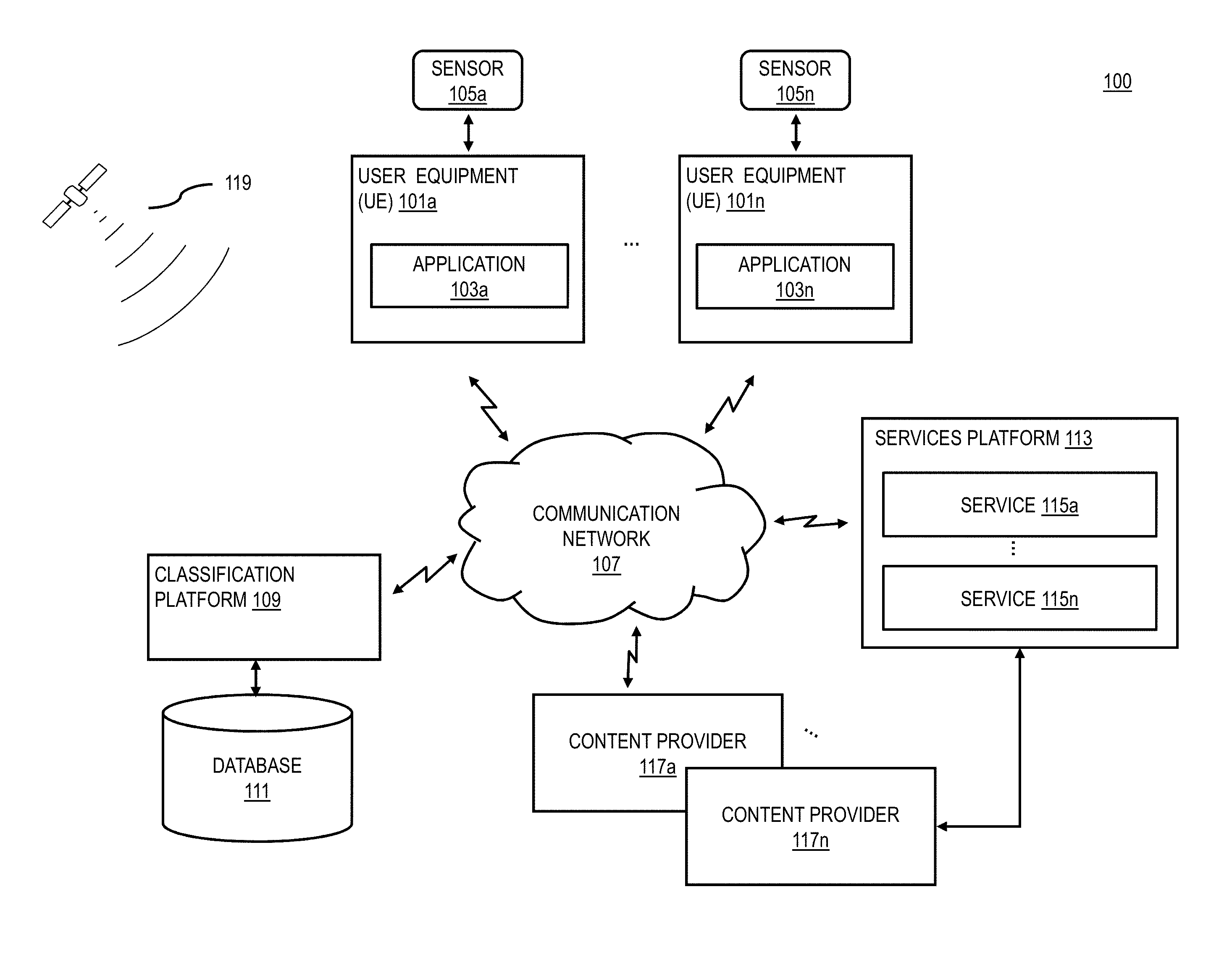
Leave a Reply